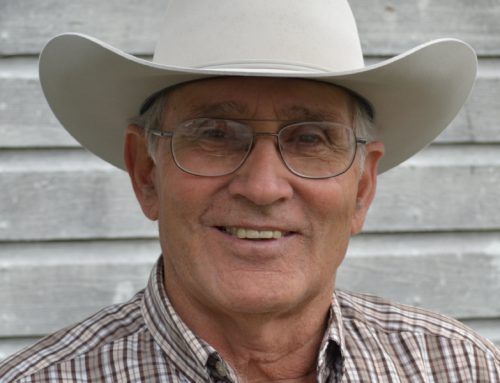 Johann Zietsman offers 25 years of sustainable cattle production to show South African cattle farmers how to double, triple or quadruple their cattle numbers while improving the quality of their veld.
Johann Zietsman offers 25 years of sustainable cattle production to show South African cattle farmers how to double, triple or quadruple their cattle numbers while improving the quality of their veld.
“Within one week of introducing my UHDG system I realised that I needed to double my stocking rates and two years later I had trebled my stocking rate,” continued Johann. “Ten years ago when I left the farm I could have comfortably carried four times the amount of cattle and grazed 1000 LSUs per 1-hectare because the soil fertility and diversity of good grass species had increased so much. It goes without saying that my cattle’s condition improved accordingly.”
He monitored his grass species over several years. In 1995, he had 86% unpalatable species, 9.5% semi-palatable and 4.5% palatable. One year later he had 46% unpalatable, 28% semi-palatable and 26% palatable.
“The combination of grazing, hoof action, dunging and urinating resulted in the return of species diversity and soil fertility, with earthworms and dung beetles increasing in great numbers,” said Johann. “Drier areas like the Karoo would naturally take longer to rehabilitate but the potential is greater,” he added.
Using his farm’s example as the extreme of the system, Johann emphasised that all farmers need to work out what works best for their environmental conditions along the high to UHDG continuum.
He recommended that farmers create grazing strip tests to experience the effect firsthand. He acknowledged that many South African farmers have labour problems but said that once the system is established, it is so simple that the farmer or one good labourer can manage it.
There is no doubt that well-managed ultra high density and high density, quick rotation grazing works and results are visible within a season. However, as Johann emphasised, it is up to each individual farmer to find their balance and work out which system they wish to use in their environment.
Some Karoo farmers have derived significant benefit from dividing their camps into 20-40 hectares where they graze herds of 300-plus cattle on these camps for two to five days in the growing season and longer in the non-growing season, then rest these camps for several months. This is regarded as high density grazing.
Other farmers use a combination of systems and use ultra high density as a tool when they need to strip graze sections of their farm where there are unpalatable species.
In all systems oxen and productive cattle can be used, provided the condition of the production cattle is maintained. If they start dropping in condition, productive cattle need to be moved to more nutritious camps or supplemented with a bypass protein such as copra.
Supplementary protein licks are necessary if cattle are veld with a high percentage of tough, lignified and/or moribund grasses or on dry winter veld.
Johann urges cattle farmers to time the birth of their calves as close as possible to the month after the rains begin each season. “Cows that calve at this time of year will be in better body condition and will reconceive faster and show the kind of inter-calving period you want to achieve,” said Johann who is no slave to high weaning weights. “A 40-45% weaning weight is fine. Cows with too much milk may sacrifice body condition and can take longer to conceive again,” he explained.
Successful cattle farming is all about keeping your eyes open, being observant of your own cattle, your own veld and your own wallet to see what works for you, added Johann. There are so many perceptions dressed up as facts that mislead farmers and prevent common sense from prevailing. “The problem with common sense is that it is not that common,” he concluded, encouraging all farmers to look at alternatives that work for them, and to closely monitor their cattle and their veld to ensure they are on track.
“If you follow the tried and tested sustainable livestock production principles, you stand to gain more than you would ever have believed possible. It’s very exciting and it works.”
For more information contact Johann Zietsman
Cellphone: (Zimbabwe): 00 263 772 365 515
Cellphone: (when Johann is in SA): 083 356 4008
Email: barzed2000@yahoo.com




